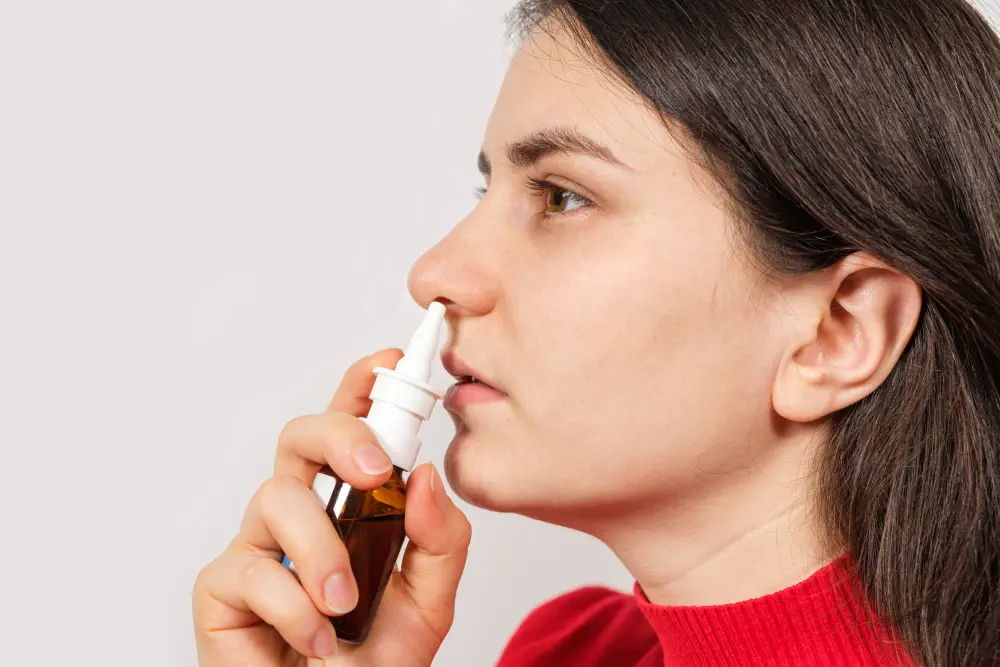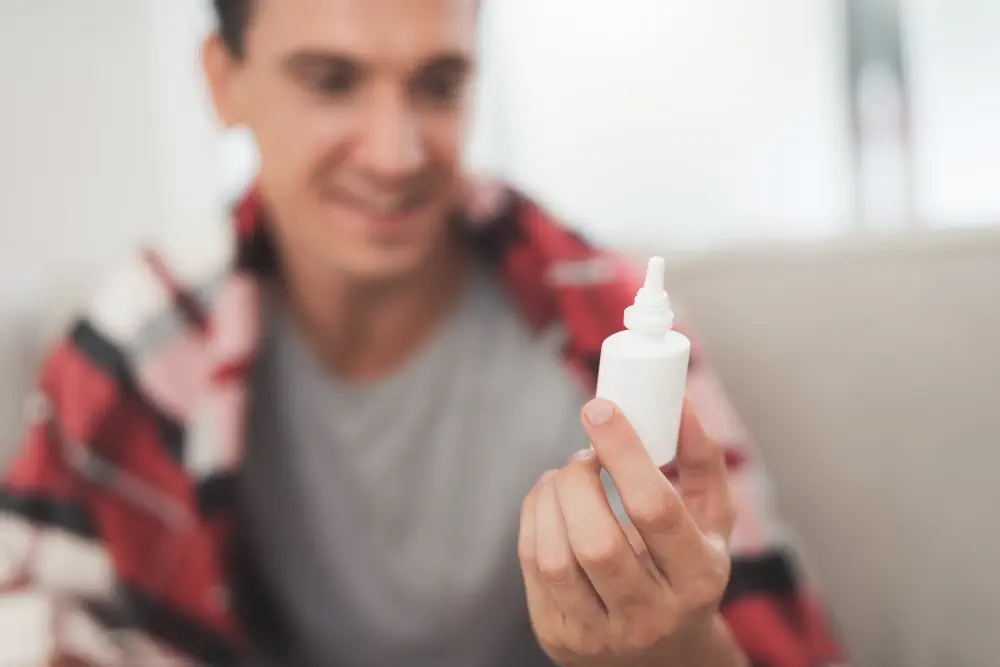We offer medical detox and multiple addiction treatment options in our
luxury treatment centres in Port Hope, Cobourg, and Ottawa.
Why Does Nasal Spray Addiction Happen?
Sarah grabs her nasal spray for the third time today. It's not even noon. Six months ago, she started using it for a stubborn winter cold. Now, she can't imagine breathing without it. One bottle stays on her nightstand, another lives in her purse, plus a backup in her car. How did simple congestion relief turn into this constant need?
This scenario plays out for thousands of Canadians daily. What begins as an innocent solution for stuffiness quietly becomes something far more complex. True nasal spray addiction operates differently than dependencies involving alcohol or opioids, yet the relief-and-rebound pattern creates genuine struggles that need proper understanding and treatment.
The Canadian Centre for Addictions sees dependency develop around many substances and behaviours, including seemingly harmless over-the-counter medications. Grasping why nasal spray addiction develops helps people escape the cycle and return to natural breathing.
Key Takeaways
- Rebound Effect Creates the Trap: Decongestant sprays temporarily shrink blood vessels, but when medication wears off, vessels swell larger than before, creating worse congestion that drives compulsive reuse within 6-12 hours.
- Only Decongestant Sprays Are Dangerous: Products containing oxymetazoline (Afrin) or phenylephrine cause virtually all cases of nasal spray addiction. Corticosteroid sprays, antihistamine sprays, and saline solutions remain safe for long-term use.
- The 3-Day Rule Is Non-Negotiable: Using decongestant nasal sprays longer than three consecutive days leads to tolerance and dependency in virtually everyone - this represents a hard medical limit, not a conservative suggestion.
- Warning Signs Include Escalating Use: Multiple bottles stashed everywhere, hourly applications instead of twice daily, panic about running out, using spray preemptively before congestion develops, and inability to sleep without dosing first.
- Recovery Requires Medical Strategy: The "one nostril method" combined with prescription corticosteroid support manages nasal spray side effects during withdrawal. Complete natural function restoration typically takes 6-8 weeks with proper tapering.
- Professional Help Prevents Permanent Damage: Seek specialist intervention for multiple failed quit attempts, severe withdrawal symptoms interfering with daily life, or structural damage like frequent nosebleeds, loss of smell, and chronic pain requiring surgical correction.

The Science Behind Nasal Spray Dependence
How Your Nasal Passages React to Decongestants
Blood vessels inside your nose expand and contract naturally throughout each day. Congestion from allergies, colds, or sinus troubles makes these vessels swell with extra blood flow. That creates the blocked feeling everyone recognizes.
Decongestant nasal sprays trigger rapid vasoconstriction—they literally shrink swollen blood vessels in minutes. Active ingredients like oxymetazoline or phenylephrine latch onto specific receptors, causing immediate narrowing. Blood flow drops sharply, tissues deflate, and breathing becomes easy again.
Here's the problem: artificial shrinking never lasts. When medication wears off hours later, blood vessels don't simply return to normal size. They often balloon larger than before. This rebound effect—doctors call it rhinitis medicamentosa—creates worse congestion than originally existed.
Rebound hits most people 6-12 hours after their last dose. What's the obvious response? Grab the spray again. Every use intensifies the cycle. Nasal passages start expecting external chemical help, slowly losing their natural ability to control blood flow.
The Biological Trap Your Body Sets
Repeated decongestant exposure fundamentally changes how nasal tissues work. Tolerance builds fast. Receptors that once responded dramatically become less sensitive with continued exposure. Scientists call this tachyphylaxis—you need bigger amounts to get smaller effects.
Your body also cuts back on making norepinephrine, the natural chemical responsible for normal vasoconstriction. Why produce something internally when you're supplying it externally? This explains why stopping spray leaves you more stuffed up than ever—nasal passages lack both artificial medication and their natural control systems.
Some people develop tolerance after three days of regular use. Others might use sprays for weeks before problems appear.
Which Types of Nasal Sprays Cause Addiction?
Decongestant Sprays: The Primary Culprits
Different nasal sprays carry vastly different risks for developing dependency. Decongestant formulas containing oxymetazoline or phenylephrine cause virtually every case of problematic overuse. These sympathomimetic drugs mimic your body's stress response, triggering fight-or-flight mechanisms that squeeze blood vessels tight.
Oxymetazoline appears in products like Afrin, plus countless generic brands. It's the most troublesome ingredient. Effects last longer than phenylephrine—up to 12 hours versus 4-6 hours. Longer action seems beneficial but actually increases nasal spray addiction potential. Extended-acting medications create a more dramatic rebound when they stop working.
Easy availability makes misuse patterns worse. Prescription medications come with detailed counselling and monitoring. Over-the-counter decongestants get bought without understanding their serious limitations.
Safe Alternatives That Won't Create Dependency
Several nasal treatment categories provide relief without causing rebound congestion or dependency patterns.
Corticosteroid nasal sprays like fluticasone (Flonase) and budesonide (Rhinocort) have completely different mechanisms. Rather than rapidly squeezing blood vessels, they reduce inflammation over days to weeks. These need consistent daily use to build effectiveness but work safely for months or years under medical supervision.
Antihistamine nasal sprays like azelastine target allergic reactions by blocking histamine release. They work especially well when congestion stems from seasonal or environmental allergies. Since they don't affect blood vessel size directly, rebound congestion can't occur.
Saline nasal sprays and rinses represent the safest choice. These simple salt-water solutions thin mucus, wash away irritants and add gentle moisture without any active medications.

What Triggers the Cycle of Nasal Spray Abuse
The Perfect Storm of Circumstances
Multiple factors often combine to transform occasional nasal spray use into problematic patterns. Seasonal allergies create especially high-risk situations. Spring pollen or fall ragweed produces weeks of persistent congestion that outlasts the recommended three-day maximum for decongestant sprays.
Chronic sinusitis or structural nasal problems like deviated septums create ongoing congestion, demanding continuous treatment. The underlying condition never fully resolves, so stopping the spray reveals both the original problem plus rebound swelling—a double burden that feels unbearable.
Environmental factors matter, too. Dry winter air, pollution, or workplace irritants create persistent nasal irritation that initially responds well to decongestant sprays.
Psychological Factors That Cause Overuse
Physical mechanisms tell only part of the story. Psychological elements significantly drive nasal spray abuse patterns. The immediate, reliable relief these products deliver creates powerful positive reinforcement extending beyond simple physical dependence.
Anticipatory anxiety builds quickly around fears of breathing difficulty. Many people panic, thinking about running out of spray or being somewhere without access to relief.
Sleep disruption makes psychological distress much worse. When nasal congestion prevents restful sleep night after night, people get desperate for any solution promising uninterrupted rest. The spray becomes linked not just with breathing comfort but with basic survival needs like sleep and energy.
Recognizing Nasal Spray Side Effects and Warning Signs
Your body sends clear signals when nasal spray use crosses from helpful to harmful. Recognizing these nasal spray side effects early enables intervention before dependency gets entrenched or permanent damage occurs.
Persistent congestion, despite regular spray use, often signals the first warning. When your usual dose stops providing complete relief, or congestion returns faster between applications, tolerance has probably developed.
Nosebleeds become increasingly common with prolonged use. Delicate nasal tissues repeatedly exposed to powerful vasoconstrictors become dry, irritated, and prone to bleeding.
Burning or stinging nose sensations indicate tissue irritation and inflammation. Fresh, healthy nasal lining should barely notice properly administered spray. Persistent discomfort suggests tissue damage and hypersensitivity to continued chemical exposure.
The Health Consequences of Long-Term Misuse
Immediate Physical Damage
Extended decongestant nasal spray use produces progressively severe health consequences that can become permanent without intervention. Chronic inflammation provides the foundation for most other complications. Persistent chemical irritation triggers ongoing immune responses that thicken nasal tissues, increase mucus production, and create perfect conditions for secondary infections.
Turbinate hypertrophy—permanent enlargement of curved bone structures inside your nose—can develop within months of regular spray use. These structures normally warm and humidify incoming air, but chronic swelling can make them so large they completely block airflow.
Structural changes to blood vessel walls create permanent nasal function alterations. Repeated cycles of extreme constriction and dilation damage smooth muscle cells that normally regulate blood flow.
Long-Term Complications Without Treatment
Untreated nasal spray addiction often progresses to serious medical conditions requiring intensive intervention. Chronic sinusitis develops when ongoing inflammation blocks normal drainage pathways. Trapped mucus gets infected repeatedly, creating cycles of antibiotic treatment and temporary improvement followed by reinfection.
Sleep-disordered breathing often worsens as nasal obstruction forces mouth breathing during sleep. Poor sleep quality affects every health aspect, from immune function to mental clarity to cardiovascular health.
Mental health impacts become increasingly significant as conditions progress. Chronic discomfort, sleep disruption, and dependency anxiety can trigger depression, social isolation, and reduced quality of life.

Breaking Free: Treatment and Recovery Strategies
Medical Approaches That Work
Successful nasal spray addiction treatment requires systematic approaches addressing both physical rebound congestion and underlying conditions that led to initial spray use.
Gradual tapering represents the most widely recommended strategy for discontinuing problematic decongestant use. Rather than stopping abruptly—which triggers severe rebound congestion—systematic reduction lets nasal tissues gradually readjust to functioning without external vasoconstrictors.
The "one nostril" method proves particularly effective. Continue using spray in one nostril while allowing the other to recover completely. Once the untreated side regains normal function (typically 1-2 weeks), begin tapering the remaining nostril.
Prescription corticosteroid nasal sprays often provide crucial withdrawal support. These anti-inflammatory medications help reduce rebound swelling without creating new dependency patterns.
Practical Recovery Techniques
Several non-medical strategies can significantly ease the transition away from decongestant sprays and support long-term recovery.
Steam therapy provides natural, temporary decongestion that reduces reliance on chemical sprays. Hot showers, humidifiers, or breathing over hot water bowls can open nasal passages naturally.
Saline irrigation using neti pots or squeeze bottles clears mucus and irritants while providing gentle moisture to healing tissues. Regular saline rinses reduce inflammation and help restore normal nasal function faster during recovery.
Sleep position modifications improve nighttime breathing when congestion peaks. Elevating your head with extra pillows or sleeping in recliners uses gravity to reduce nasal swelling and improve airflow.
Prevention: Following Instructions and Restrictions
Reading Labels and Understanding Limits
Preventing nasal spray addiction starts with understanding and respecting strict limitations designed to keep these products safe and effective.
The three-day maximum rule exists because virtually everyone develops some tolerance and rebound congestion with longer use. This isn't a conservative estimation—it represents the outer limit before problems commonly develop. Treating this as a hard deadline rather than a suggestion prevents most dependency cases.
Proper application technique maximizes effectiveness while minimizing nasal spray side effects. Aim spray toward the outer nasal wall rather than straight back. Avoid sniffing forcefully immediately after administration.
Understanding when to stop proves equally important as knowing when to start. If congestion doesn't improve significantly within 24-48 hours of beginning treatment, the underlying problem likely requires different intervention rather than continued decongestant use.
Building Sustainable Nasal Health Habits
Long-term nasal health requires addressing root causes rather than repeatedly treating symptoms with quick fixes.
Identifying personal triggers allows targeted prevention strategies. Keep symptom diaries tracking congestion patterns, environmental exposures, and potential allergens. This information helps healthcare providers develop comprehensive treatment plans addressing underlying causes.
Creating optimal indoor environments supports the natural nasal function. Maintaining humidity levels between 30-50%, reducing dust and allergens, and ensuring good air circulation prevents many chronic congestion cases.

When Professional Help Becomes Necessary
Several warning signs indicate that nasal spray addiction has progressed beyond what self-directed efforts can safely manage.
Multiple failed attempts to stop using sprays suggest dependency has become too entrenched for unassisted withdrawal. If you've tried reducing use several times without success, professional support provides additional tools and strategies for breaking cycles.
Severe withdrawal symptoms interfering with work, sleep, or daily activities require medical management. Some people experience such dramatic rebound congestion they can't function normally during attempted withdrawal.
Evidence of structural damage—frequent nosebleeds, loss of smell or persistent pain—indicates the need for specialist evaluation. ENT (ear, nose, throat) doctors assess whether permanent changes have occurred and recommend appropriate treatment.
Your Path Forward: Reclaiming Natural Breathing
Nasal spray addiction represents a common but often misunderstood form of physical dependency affecting thousands of Canadians yearly. While these products can provide immediate relief and can be life-changing for acute congestion, understanding their limitations and respecting their restrictions prevents problematic pattern development.
Recovery from nasal spray addiction requires patience, planning, and often professional support, and complete natural nasal function restoration remains achievable for virtually everyone. Success lies in early warning sign recognition, systematic withdrawal approaches, and comprehensive treatment of underlying conditions that created the need for decongestant relief.
At the Canadian Centre for Addictions, we recognize dependency takes many forms. We're committed to helping individuals overcome reliance on substances or behaviours that have become problematic. If you're struggling to break free from nasal spray addiction, contact us at 1-855-499-9446 to speak with specialists who understand various dependency complexities.
FAQ
Can you really become addicted to a nasal spray?
While not an addiction in the traditional sense, you can develop physical dependence on decongestant nasal sprays, creating compelling urges to continue use despite negative consequences. This condition, called rhinitis medicamentosa, shares many characteristics with other dependency forms.
How long does nasal spray withdrawal last?
Most people experience peak withdrawal symptoms during the first week after stopping decongestant sprays, with gradual improvement over 2-4 weeks. Complete natural nasal function recovery typically occurs within 6-8 weeks.
What's the difference between nasal spray dependence and addiction?
Dependence involves physical tolerance and withdrawal symptoms when stopping, while addiction includes psychological cravings and continued use despite harmful consequences. Nasal spray abuse problems usually involve dependence rather than true addiction.
Are there any nasal sprays that are safe for long-term use?
Yes, corticosteroid nasal sprays, antihistamine sprays, and saline solutions work safely for extended periods under medical supervision. Only decongestant sprays containing oxymetazoline or phenylephrine create dependency risks.
How can I prevent nasal spray dependence in the future?
Never use decongestant nasal sprays longer than three consecutive days, address underlying conditions like allergies with appropriate treatments, and use saline rinses or steam therapy as first-line approaches for mild congestion.






